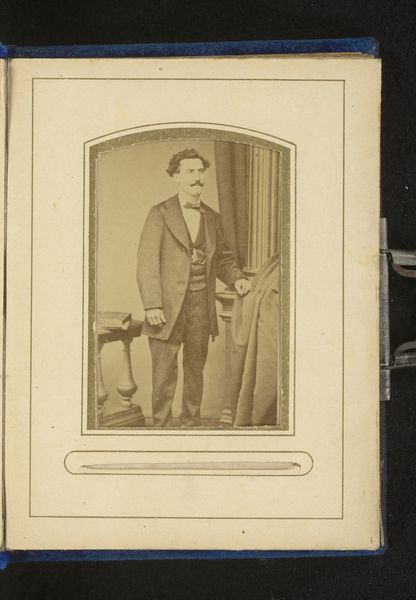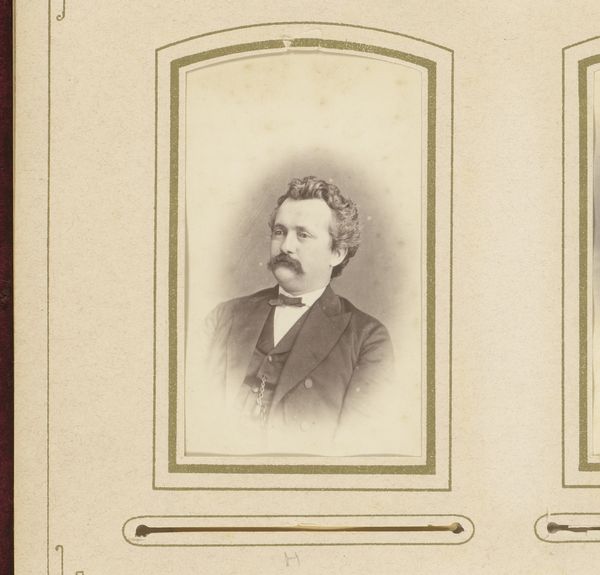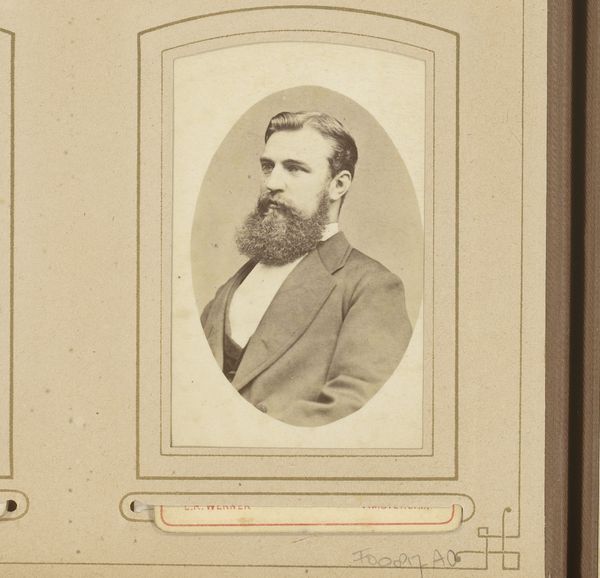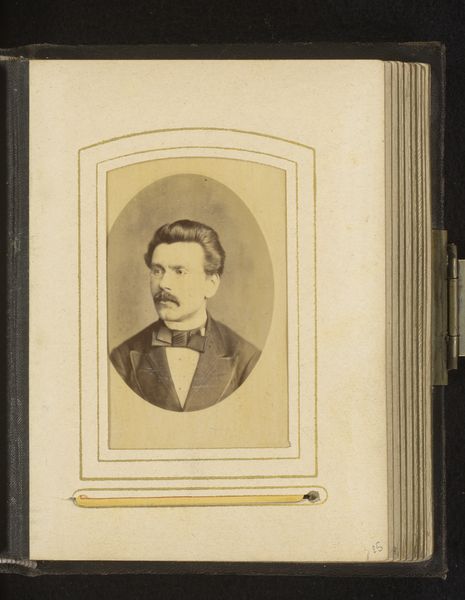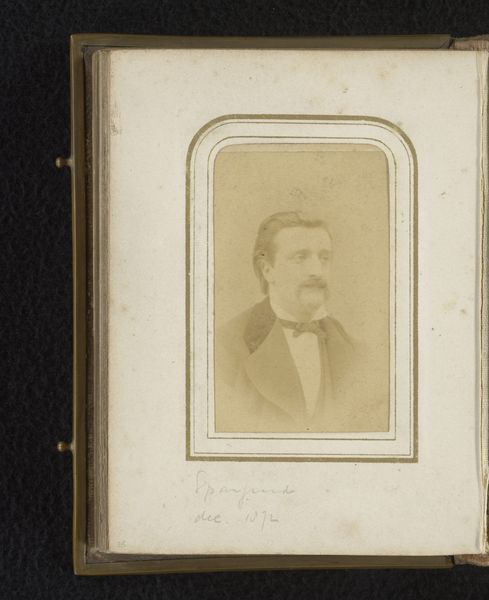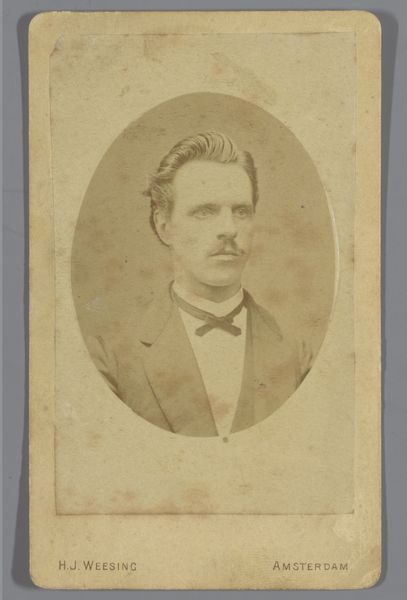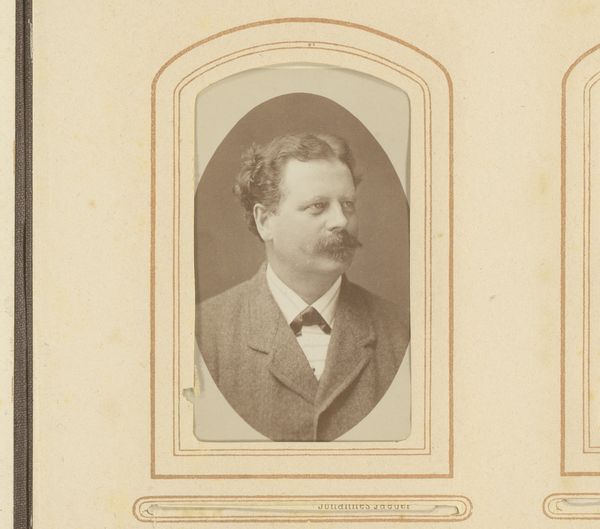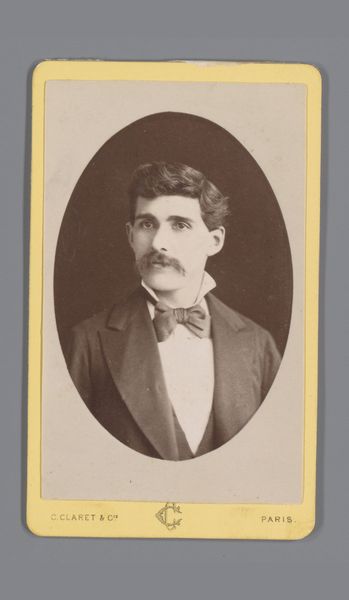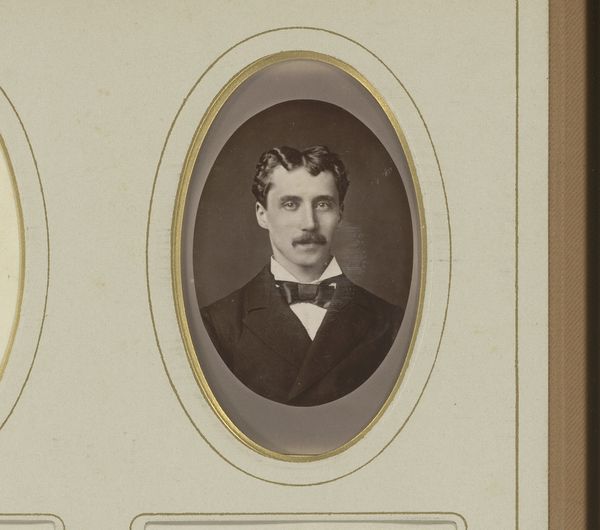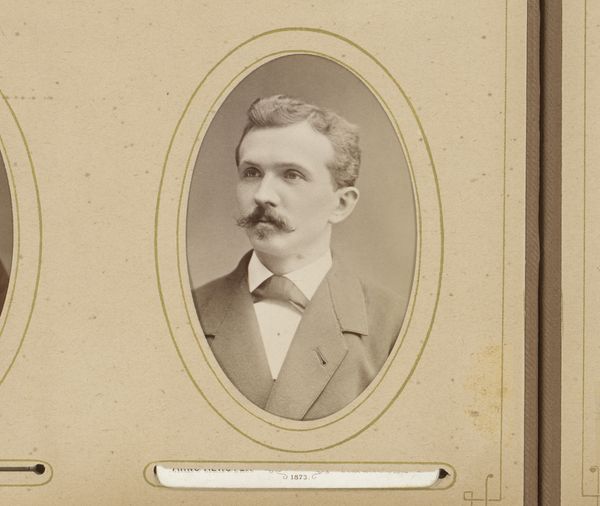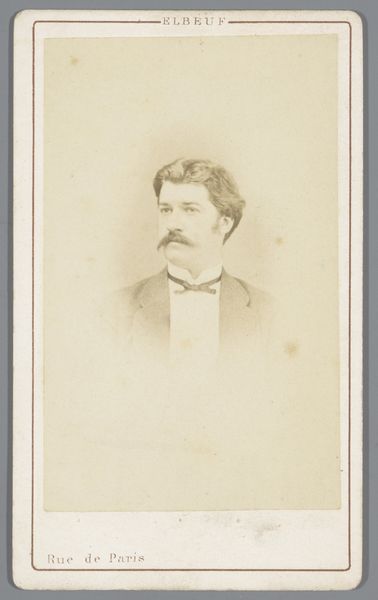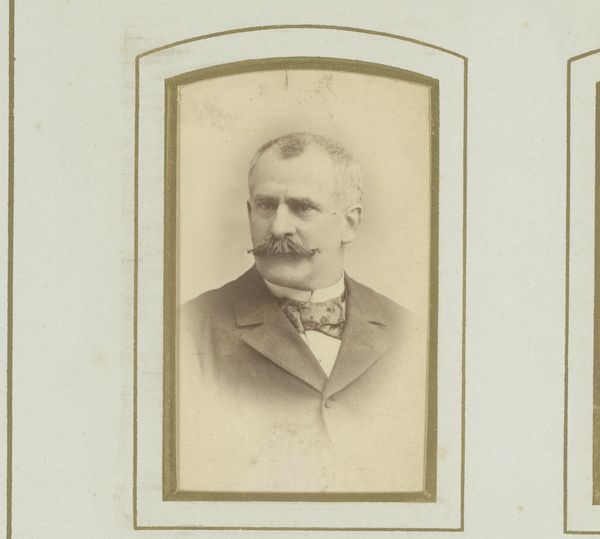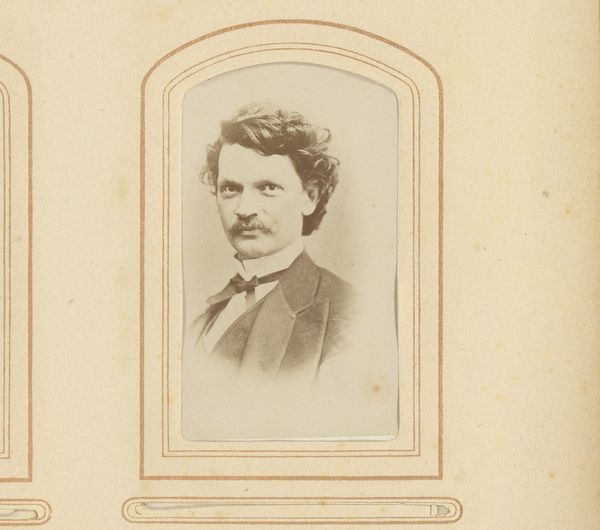
Frank R. O'Neil, The St. Louis Missouri Republican, from the American Editors series (N35) for Allen & Ginter Cigarettes 1887
0:00
0:00
Dimensions: Sheet: 2 7/8 x 3 1/4 in. (7.3 x 8.3 cm)
Copyright: Public Domain
Curator: Immediately striking is the duality—the split composition, landscape, and portrait. Editor: Indeed. Here we have, from the American Editors series, a trade card produced by Allen & Ginter Cigarettes in 1887, portraying Frank R. O’Neil of The St. Louis Missouri Republican. Curator: The texture, a sort of porous softness, is interesting when set against the sharp division of the composition; what strikes me is how one half feels Impressionistic in palette, whilst the portrait attempts a more formal representation. Editor: It speaks to the late 19th century’s fascination with progress and civic identity. The industrial riverfront scene mirrors O’Neil’s own position within the rapidly expanding media landscape. He's framed as part of St. Louis’s transformation into a modern metropolis. Curator: Precisely, note how the formal, almost austere portrait of O’Neil is backed by the newspaper’s masthead—a kind of structural reinforcement or societal endorsement. The bridge landscape also appears self-contained, though connected to the portrait by association alone. Editor: And don’t overlook that cigarette cards like these functioned as miniature advertisements but also as collectibles. They circulated images and ideas, creating a visual culture of celebrity around figures like O’Neil. They transformed an editor into a recognizable face and a product. Curator: What intrigues me, regarding its circulation and presentation of information, is how each element contains or mirrors the next—O’Neil is "framed" within a city, which itself is framed by the newspaper, etc. The layering creates an infinite number of entry-points for the consumer/viewer. Editor: Very true. This work, ultimately, is less about the man himself and more about his representation as an emblem of a certain cultural and industrial moment, capturing how image circulation contributed to shaping a modern society. Curator: The mirroring offers a self-reflexive, or recursive quality that lends it an intellectual interest. Editor: A pertinent reminder of how commercial art and media representation shape our understanding of individuals and the broader public.
Comments
No comments
Be the first to comment and join the conversation on the ultimate creative platform.
